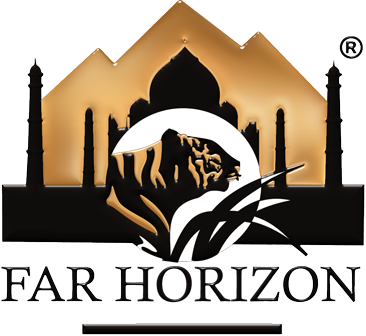Taj, Tigers, Leopards, Lions of India - The World"s Greatest Land of Big Cats
more_vert
-
Duration16 Days
-
Region
-
Category
-
Best Time
- October - May
Introduction
Taj, Tigers, Leopards, Lions of India - The World"s Greatest Land of Big Cats View the rich birdlife of India at the Keoladeo Bird Sanctuary at Bharatpur. Meet the Royal Bengal Tigers at Ranthambore National Park and the Spotted Leopards at Jawai, with these Big Cats roaming the semi-arid desert lands of Rajasthan. Combining this with a visit to the ancient capital of India - Delhi, the Wonder of the World - The Taj Mahal, The great Palaces and Citadels of Jaipur and Jodhpur. Proceed to Gujarat - "Land of the Lions" and visit the Sasan Gir National Park to see the tawny Asiatic Lions. End the tour through the City That Never Sleeps - Mumbai!
In all the jungles witness the cacophony on wings as India is also the land of 1,272 species of birds, a number that makes India have 60% of the bird life of Africa with just 10% of the land mass being close to cold countries north of the Himalayas.
Destinations Covered
Delhi
The City of GloryDelhi is said to be one of the oldest existing cities in the world, along with Jerusalem and Varanasi. It is the Capital Territory of India and a modern-day citadel that's dotted with ancient monuments.
History and Culture
Legend estimates it to be over 5,000 years old. Over the millennia, Delhi is said to have been built and destroyed 11 times. The oldest alleged incarnation of the city shows up in the Indian mythological epic Mahabharata as Indraprastha.
Bharatpur
The history of Bharatpur dates back to 5th century BC, when the Matsya kingdom flourished here. The Matsyas were allies of the Pandavas in the Mahabharata war. Legends say that the origin of the name Bharatpur is traced to Bharat, younger brother of Lord Ram. Laxman, the other brother, was given the most prestigious position as that of the family deity of the ruling family of Bharatpur. His name also appears in the state seals and coat-of-arms.
Ranthambore
The Great Wildlife AdventureJaipur
The Pink CityJaipur is the largest city in Rajasthan and was built in the eighteenth century by Sawai Jai Singh as India's first planned city. Jaipur is a major tourist attraction amongst Indian as well as international travellers. Jaipur is often called the Pink City in reference to its distinctly colored buildings, which were originally painted this color to imitate the red sandstone architecture of Mughal cities. The present earthy red color originates from repainting of the buildings undertaken for a visit by the Prince of Wales in 1876.
Jawai Bandh
The Land of LeopardsThe Jawai hills located in the Pali district of Rajasthan are known as the leopard hills, surrounded by Jawai Bandh and grasslands while the area is enclosed by the Aravali range. Considered among one of the lesser known tourist destinations, this place deserves much more attention than it gets.
Mumbai
The City of DreamsIndia’s largest port, its commercial and industrial center, as well as fashion capital and heart of Bollywood (India’s thriving movie industry), Mumbai is an endlessly fascinating hive of activity. A jumble of captivating contradictions, grand colonial architecture rubs shoulders with chaotic bazaars, trendy restaurants, exclusive boutiques, slums and shanty towns, all interspersed with beautiful, tropical palm trees. A shopper’s haven, this bustling cosmopolitan metropolis offers anything from pavement stalls and ancient markets to glitzy malls and designer outlets.
Gir National Park
The Land of Asiatic LionsLocated in the western part of Gujarat, Gir National Park & Wildlife Sanctuary is the only place outside Africa where lions are living. Spread across 1412 sq.km the park is a blend of dry deciduous forest and Savannah forest.
Detailed Itinerary
- Day 1 Arrive Delhi
- Day 2 Delhi
- Day 3 Delhi – Agra – Bharatpur (Keoladeo National Park) (Approx. 175 miles / 280 Kms / 5 Hours’ drive)
- Day 4 Bharatpur (Keoladeo National Park)
- Day 5 Bharatpur – Ranthambore By Train (Kota Jan Shatabdi Express # 12060 – 14:50/17:03 Hrs.)
- Day 6 Ranthambore National Park
- Day 7 Ranthambore National Park
- Day 8 Ranthambore – Jaipur (Approx. 106 miles / 170 Kms / 4 hours’ drive)
- Day 9 Jaipur
- Day 10 Jaipur – Jawai (Approx. 236 Miles / 380 Kms / 6 Hours’ drive)
- Day 11 Jawai
- Day 12 Jawai – Udaipur By Road (Approx. 109 Miles / 175 Kms / 3 Hours’ drive) & Fly to Mumbai (6E-6108 – DEP: 19:35 / ARR: 20:55 Hrs.)
- Day 13 Mumbai
- Day 14 Mumbai – Rajkot By Flight (6E-821 – DEP: 11:05 / ARR: 12:10 Hrs.) & drive to Sasan Gir Nationa Park (Approx. 101 Miles / 162 Kms / 4 Hours’ drive)
- Day 15 Sasan Gir National Park
- Day 16 Gir – Rajkot By Road (Approx. 101 Miles / 162 Kms / 4 hours’ drive) & Fly to Mumbai (6E-6259 – DEP: 1:240 / ARR: 13:45 Hrs.)



























